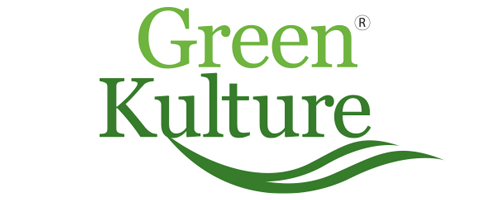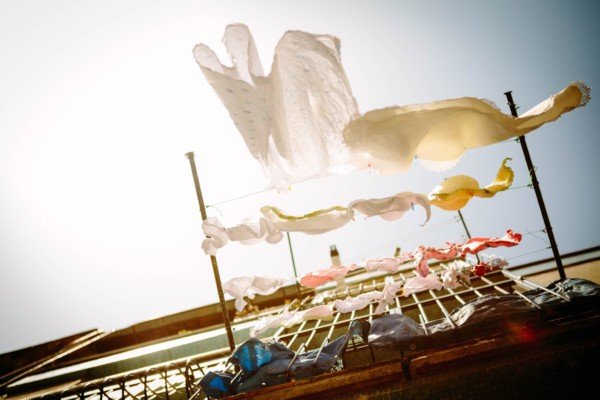You can smell it when you walk down the laundry aisle. Sometimes it’s so bad you have to cover your nose.
All those perfumes!
It’s not just your imagination. In 2008, scientists reported on the toxic chemicals in laundry detergents and other laundry products. This probably comes as no surprise to you—most of us know that with synthetic fragrance come chemicals that our body doesn’t care for (to put it lightly).
Since 2008, more chemicals found in common grocery store detergents have surfaced. In fact, we found seven more, and have listed them for you here, along with some healthier alternatives. You shouldn’t have to suffer asthma or dermatitis just to have clean clothes.
Scientists Find Proof of What We’ve Suspected
First, let’s look at that study. Researchers from the University of Washington studied top-selling laundry and air-freshening products and found that they emitted dozens of different chemicals. All of them gave off at least one identified as toxic or hazardous under federal laws!
Worse—none of these chemicals was listed on the label.
Where were these chemicals found?
Among the products tested were a dryer sheet, a fabric softener, and a laundry detergent, as well as spray and plug-in air fresheners. Results showed nearly 100 volatile organic compounds (VOCs) emitted from the six products, and none were on the label. “Five of the six products emitted one or more carcinogenic ‘hazardous air pollutants,’ which are considered by the Environmental Protection Agency to have no safe exposure level,” said study author Anne Steinemann.
That’s not all. A later 2011 study by the same researchers found that air vented from machines using top-selling scented liquid laundry detergent and scented dryer sheets contained hazardous chemicals, including two classified as carcinogens.
What did scientists find?
For the study, researchers ran a load of laundry once with no products, once with a leading brand of scented liquid laundry detergent, and once with both the detergent and a dryer sheet. They captured the exhaust from the dryer vent with a canister.
An analysis of the captured air showed more than 25 VOCs, including seven hazardous air pollutants. The two carcinogens were acetaldehyde and benzene.
“These products can affect not only personal health,” said Steinemann, “but also public and environmental health. The chemicals can go into the air, down the drain and into water bodies.”
7 Toxic Chemicals in Laundry Detergent
Let’s look more closely at what manufacturers are putting into laundry detergents that may not be good for our health:
1. Fragrance:
This is one of the main problems, and the focus of the two studies above. Manufacturers combine a number of chemicals to produce a fragrance—so you’ll believe your clothes are clean because they smell clean—and they don’t have to list those chemicals on the label because of trade protection. As we’ve seen, some of those chemicals can be very toxic.
2. Cleaning agents (surfactants)
These are included in the formula to help the product clean better.
Examples include chemicals like quaternium-15 (known to release formaldehyde, a known carcinogen), diethanolamine (linked with skin and eye irritation and possibly liver problems), nonlphenol ethoxylate or NPE (toxic to nerves, irritating to skin, potential hormone disruptor, toxic to aquatic life), linear alkyl benzene sulfonates or LAS (irritating to skin and eyes and toxic to aquatic life; benzene on its own is a carcinogen), and petroleum distillates (linked to cancer and lung damage).
3. Stabilizers
These chemicals help stabilize the formula, so that it lasts longer on the shelf. Examples include polyalkylene oxide or ethylene oxide, which are linked with eye and lung irritation, and even dermatitis.
4. Bleach
Bleach may be used separately or may be included in the detergent itself. It’s known to irritate skin, eyes, and lungs, and when it mixes with wastewater, it can form toxic organic compounds that have been linked with respiratory issues, liver, and kidney damage.
5. 1,4-dioxane
This is a chemical by-product of detergent manufacturing. In independent tests, Women’s Voices for the Earth found 89 parts per million (ppm) in Tide Free & Gentle and 63 ppm in regular Tide. They helped increase awareness, and Proctor & Gamble agreed to reformulate to reduce levels to below 25 ppm. Future tests should show whether they made good on that promise.
6. Brighteners
You’ll find these in detergents advertising their “brightening” powers. Brighter whites! Brighter colors! What’s creating all this brightness? Chemicals that actually remain on the clothes to absorb UV light and help clothes “appear” brighter.
We’re talking things like naphthotriazolystilbenes (linked with developmental and reproductive effects), benzoxazolyl, diaminostilbene disulfonate, and more. Since these remain on the clothes, they are likely to come into contact with skin.
7. Phosphates & EDTA
Manufacturers use these to make detergents more effective in hard water, and to help prevent dirt from settling back on clothes when they’re washing. These chemicals have long been associated with environmental damage, particularly in our streams and waterways. They cause algae blooms that damage ecosystems.
Many detergents have eliminated these, but they’re often using ethylene diamine tetraacetic acid (EDTA) in its place, which does not readily biodegrade, and has been found to be toxic in animal studies.
Natural Alternatives
We don’t have to subject ourselves and our families to all these chemicals for the sake of clean clothes. Instead, there are a number of steps we can take to protect ourselves and the environment:
Make your own detergent
It’s not hard! All you need is a little washing soda, borax, and unscented bar soap like Dr. Bronner’s. Wellness Mama has a great recipe, and you can find others online as well.
Buy the safest you can
If you don’t want to do it yourself, look for the safer options out there. The Environmental Working Group has a great laundry guide where you can find those products that scored the lowest hazard rating.
Skip the fabric softener
A half-cup of vinegar added in the rinse cycle will produce the same results without the toxic chemicals.
Naturally remove stains
Instead of using chemical-laden stain removers, simply pre-treat your stain with a combination of washing soda, baking soda, and water.
Try real brightening
A little baking soda added to the wash cycle will naturally brighten colors, without the clingy chemicals to irritate your skin.
Dump the dryer sheets
Want to reduce static cling? Try a dryer ball. You can find them just about anywhere, or you can make your own. DIYnatural has directions, as does Petalstopicots.com. If you miss the fragrance of your dryer sheet, add your favorite essential oil to a damp rag and throw it in with your load during drying.
Frequently clean out your washer
This helps to get rid of any soap scum, bacteria, or other icky things that have collected in your machine over time. Simply add some white vinegar into a hot water cycle and run.
Content by Annmarie Skin Care







